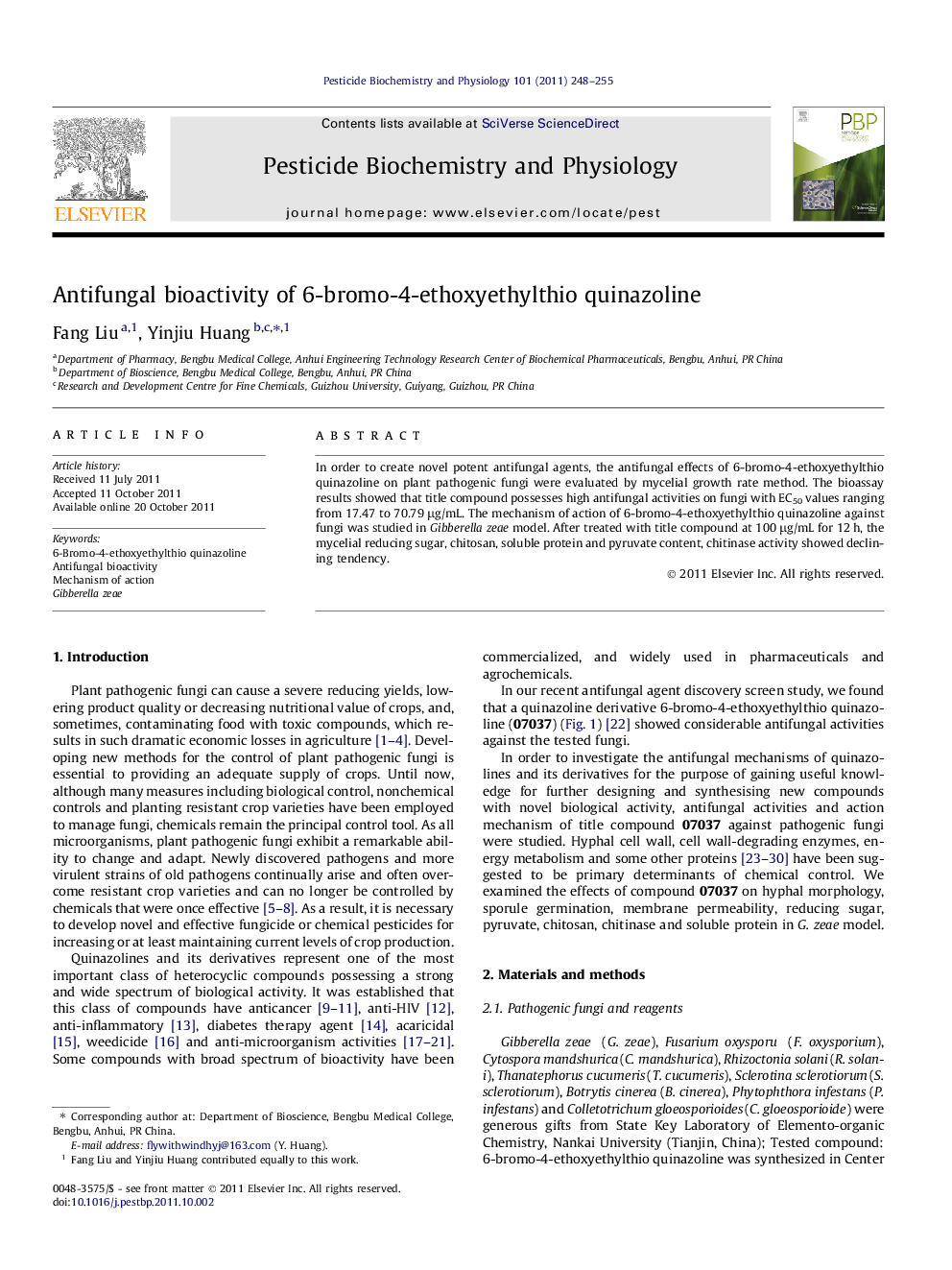| کد مقاله | کد نشریه | سال انتشار | مقاله انگلیسی | نسخه تمام متن |
|---|---|---|---|---|
| 2009830 | 1066689 | 2011 | 8 صفحه PDF | دانلود رایگان |

In order to create novel potent antifungal agents, the antifungal effects of 6-bromo-4-ethoxyethylthio quinazoline on plant pathogenic fungi were evaluated by mycelial growth rate method. The bioassay results showed that title compound possesses high antifungal activities on fungi with EC50 values ranging from 17.47 to 70.79 μg/mL. The mechanism of action of 6-bromo-4-ethoxyethylthio quinazoline against fungi was studied in Gibberella zeae model. After treated with title compound at 100 μg/mL for 12 h, the mycelial reducing sugar, chitosan, soluble protein and pyruvate content, chitinase activity showed declining tendency.
Microphotograph of the hyphal morphology of G. zeae treated with 6-bromo-4-ethoxyethylthio Quinazoline. After treatment of G. zeae with 6-bromo-4-ethoxyethylthio Quinazoline at the concentration of 100 μg/mL for 24 h, most of its hyphal became rough, malformed. In addition, the cell of the hypha swelled and some of its endosome condensed, leaked out, and formed blanks.Figure optionsDownload as PowerPoint slideHighlights
► The structure of 6-bromo-4-ethoxyethylthio quinazoline is novel.
► Bioassay results showed that title compound possesses antifungal activity.
► Title compound executes antifungal activity through physiology pathway and cytotoxicity.
► 6-Bromo-4-ethoxyethylthio quinazoline could be a potential fungicide.
Journal: Pesticide Biochemistry and Physiology - Volume 101, Issue 3, November 2011, Pages 248–255